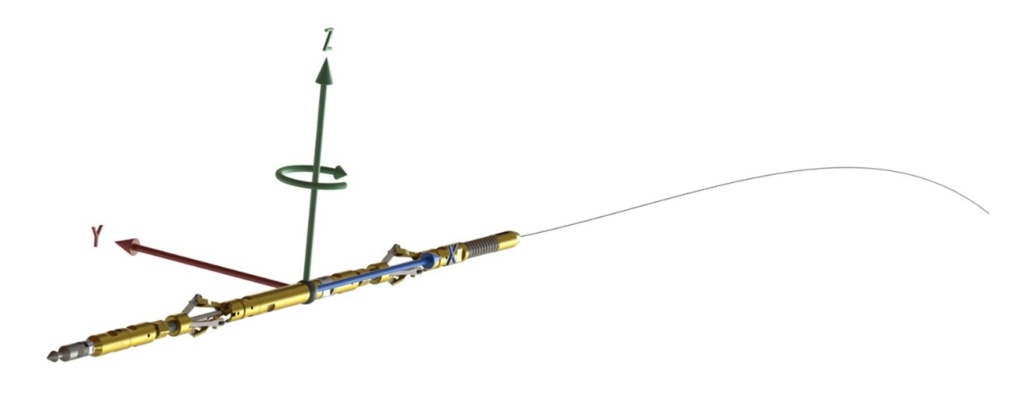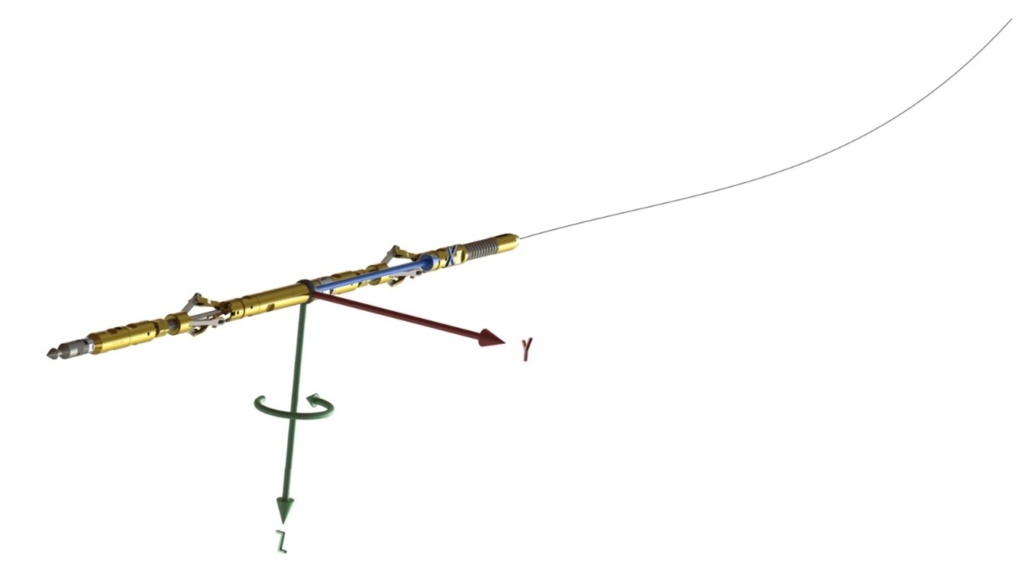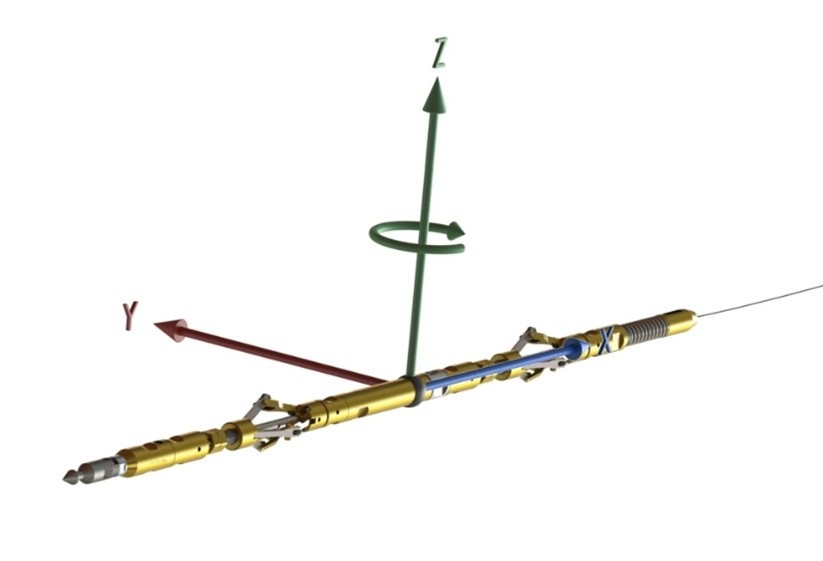A technical report by John Flåm, Head of R&D at Devico
Are you aware that Devico supplies wheel-based helix centralizers with the DeviGyro? Helix centralizers induce a cork-screw motion on the instrument assembly as it travels down the hole. This invention was developed by Mike Ayris Founder of Downhole Surveys our close partner in Australia and proved to be so beneficial that it was patented. Setting a new standard for survey instrumentation and methodology.
Do you know why? This short article tries to give some answers.
What is the main problem?
One of the main challenges when aiming for a trustworthy gyro survey, is bias drift. Bias drift is present in all gyroscopes. It can most easily be studied when the gyroscope sees no movement and no rotation at all. In this case the gyroscope should ideally output a zero signal, corresponding to no rotation. But in practice, the gyroscope typically outputs a non-zero signal, falsely indicating that there is some rotation. If the bias was a constant offset this would have been straight forward to resolve. One could simply subtract it. Unfortunately, it is well known that bias is not constant. Moreover, the bias level of a borehole gyroscope cannot be fully tracked and compensated for regardless of how advanced calibration procedures are applied during production. Some residual bias drift will always be present. And because the measurements from a reference gyro are summed (numerically integrated) to estimate angles, a small error on each measurement may accumulate to a significant error on the angle estimate at the far end of the hole.
What do helix centralizers offer?
In addition to calibration, the most common way to deal with bias instability in bore hole gyros, is to make periodic standstills during the survey. Thus, one essentially measures the bias during the standstill. In this way, one gets an accurate picture of the bias at the standstill points. Utilizing this knowledge, one then assumes how the bias has varied between the standstill points. Of course, such assumptions will not always correspond with reality, in which case they lead to errors. So, what do helix centralizers have to offer? The benefits of helix centralizers can be illustrated through a very simple example. Figure 1 illustrates a 3-axis gyroscope instrument. In this example, there is some residual bias on the z-axis, as indicated by the circular arrow. Specifically, the z-axis gyro is falsely reporting larger rotation to the right than what is true. So, even if this instrument travels in a perfectly straight borehole and maintains the same orientation as in Figure 1, the z-axis gyroscope will falsely tell us that the heading is changing and that the hole is deviating to the right.

An instrument equipped with helix centralizers will however rotate. Once the instrument has travelled further down the hole such that it has rotated 180 degrees, as shown in Figure 2, the same bias will now indicate that the instrument is drifting to the left. The bias that the helix centralizers help us to combat is rather slowly varying, so within a short time span of 180 degrees rotation, we can assume that the bias changes very little. Obviously, having an alternating drift pattern, to the right and left, is much preferred over systematic drift off.

The net effect of the helix centralizers is that they force the residual bias to oscillate around zero. When summed over time, positive and negative bias contributions tend to cancel each other out. Hence, one greatly increases the probability that heading estimation stays on track, rather than allowing it to wander off in the wrong direction. Helix centralizers are an invention that recognize that some bias will always be left uncompensated and offer a good solution to the problem exploiting simple physics. Devico’s helix centralizers utilize this principle in combination with classical standstills. The helix movement allows the standstills to be quite far apart. With a surveying speed of around 60 m/min you can survey 400m between each standstill. Moreover, the helix movement gives you more confidence in the data between the standstill.
Additional benefits of helix centralizers and Devico’s pressure barrels
Wheel based centralizers offer very little friction, meaning that relatively flat holes can be surveyed without pump-in. Pumps often operate in a pulse-like manner, meaning that the instrument becomes subject to a jerky travel. All reference gyros benefit from smooth and steady motion, so if pump-in can be avoided it is often beneficial.
The DeviGyro is an autonomous instrument that can be fitted into a variety of different pressure barrels for different applications. Inside each pressure barrel, the DeviGyro is centralized, and vibration damped. There is no metal-to-metal contact between the instrument and the pressure barrel. In addition, to accommodate varying drill-string sizes, the centralizer wheels are suspended. The combined effect is powerful vibration damping in several steps. All reference gyros and accelerometers benefit from low vibration.
When an instrument assembly hits the water level of a hole, it is typically subject to a very fast temperature change. Fast temperature changes typically induce fast changes in the bias that can be hard to compensate. Due to the non-contact principle between the DeviGyro and the pressure barrel, such temperature changes will affect the electronics with a significant delay, and in a much more gradual way, making the bias easier to track.
Vertical holes
Experienced surveyors will realize that Helix centralizers do also have some limitations. When operating in deep holes very near the vertical, a rotation may be undesirable. For this reason, we also supply non-helix centralizers. In most cases, however, the benefits of rotation in general far outweigh the downsides, as proven by the significant number of tests and comparisons with other survey instruments that have been carried out. Moreover, holes that are intended to be vertical often quickly deviate away from the vertical to an extent where helix centralizers may be preferred.
Equipment for the field
When you purchase or rent a reference gyro, the listed technical specifications often refer to results that can be obtained in a laboratory setup. They often do not reflect real life field conditions. Devico realizes that any reference gyro will benefit from the best possible housing to produce accurate trajectory estimates. Therefore, we invest a significant amount of effort into pressure barrels and centralizers. As this article indicates, they can indeed offer much more than just being a robust instrument container.
Find information about the DeviGyro and it’s range of running gear here.
